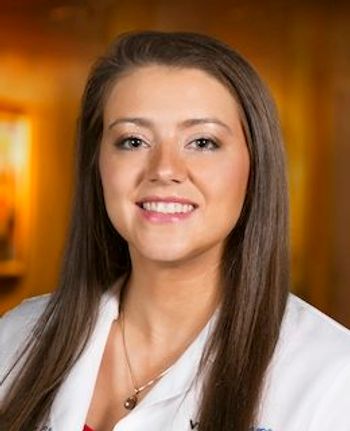At the 2025 AOA Optometry’s Meeting, Karen R. Hoffman, OD, presented 3 cases in which patients with complex corneas were fitted with customized scleral lenses (Zenlens; Bausch + Lomb); in the end, each patient achieved 20/20 vision and were happy with their vision and were able to wear the lenses comfortably for extended periods.
Hoffman's poster, which is entitled, "Utilization of customizable toric peripheral curves to optimize scleral lens fit and vision outcomes in patients with irregular astigmatism and corneal complexities," showcased the clinical work of herself, Cian Gildea, BscOptom, and Boris Severinsky, OD, FAAO, FBCLA, FSLS.
Hoffman spoke on the clinical utility and customization potential of microvaults in scleral lens design. Her work highlights an underutilized yet powerful approach to managing complex corneal irregularities and improving outcomes for both patients and practitioners.
Expanding customization with microvaults
Key takeaways for optometrists
- Microvaults offer a versatile, customizable solution for complex corneal conditions, with the ability to vault over obstructions and scars without compromising lens fit.
- Successful outcomes are achievable in just 2–3 revisions, even in patients with significant corneal irregularities.
- Patients and providers both report high satisfaction, with patients achieving 20/20 vision and comfort throughout extended wear.
- There's an urgent need for more optometrists to become comfortable fitting specialty lenses, as demand continues to grow.
According to Hoffman, microvaults can be placed anywhere on a scleral lens, including the vaulting chamber or at the lens edge. With dimensions up to 900 microns in depth and 9 millimeters in diameter, these design modifications allow for precise vaulting over corneal abnormalities such as scars or elevated tissue.
In one standout case, Hoffman describes a patient with a peripheral corneal scar. By placing a microvault inside the vaulting chamber, the lens achieved complete clearance, avoiding any contact with the sensitive area. "We don’t want the lens touching the eye anywhere except at the landing zone," she emphasized.
Clinical outcomes: Better vision with fewer revisions
One of the most surprising and encouraging aspects of her findings was that in all three presented cases, patients achieved 20/20 vision with only 2 to 3 lens revisions. "It is possible in our practices to fit these lenses successfully—even in challenging cases," she said.
Patients reported high comfort and long wear time, while eye care professionals (ECPs) also expressed high satisfaction with the fitting process and outcomes. These findings speak not only to the viability of advanced scleral lens designs but also to the importance of broader adoption.
Bridging the gap in care
Hoffman sees a significant gap in access to specialty lens fittings, noting the demand far exceeds the number of providers currently offering these services. “This is a big underserved area in our field,” she stated. “My hope is that my presentation inspires even one optometrist to take that next step and begin fitting scleral lenses.”
Conclusion
Hoffman’s work at the 2025 AOA Optometry’s Meeting reinforces the transformative potential of modern scleral lens technologies, especially for patients with challenging ocular conditions. With tools like microvaults, today's optometrists are equipped to provide life-changing vision correction—one custom lens at a time.



















































.png)


